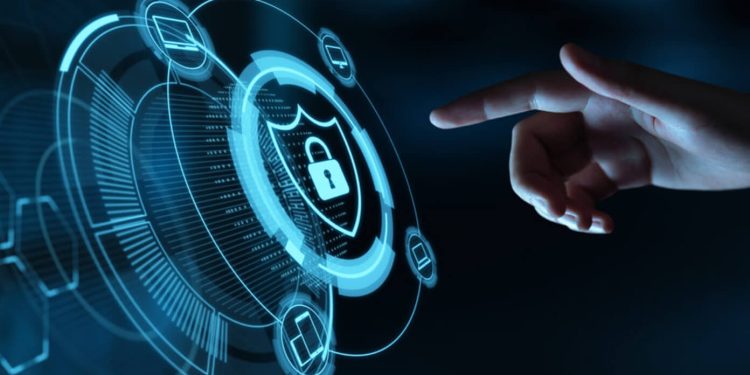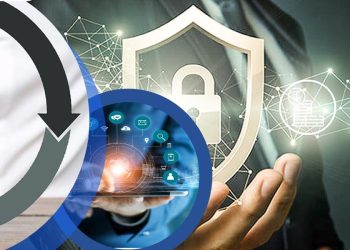Covid-19 pandemic has made organizations undergo intense changes. Today, with more computing assets residing outside their infrastructure, their work structure has been profoundly transformed. As a result, security risks have increased manifold. As per Statista, data exfiltration and leakage have been rising after the pandemic outbreak. The standard cost of a data breach resulting from such security risks can go as high as $137,000.
It is, therefore, crucial for business organizations to understand the top security and risk management trends to enable rapid reinvention in their organizations.
Cybersecurity mesh
It is a modern security approach that focuses on establishing smaller, individual perimeters around each device or access point. This approach to cybersecurity is scalable, flexible, and reliable. Smaller, respective perimeters are recreated to protect distributed access points, which enables network managers to offer different levels of access to other constituents and assets. The reason why this approach to cybersecurity is becoming popular is that it works on a zero-trust network policy, in which any random device is not trusted to access the broader network.
As a result, organizations can extend security controls to distributed assets. This is especially useful in today’s times when many IT assets now operate outside the traditional enterprise perimeter.
[Also Read: Enterprise Risk Management: Factors to Keep in Mind.]
Identity-first security
With the proliferation of digital transformation projects and the adoption of work from home due to the pandemic, traditional corporate boundaries have been rendered obsolete. In this new working environment, everyone is an “outsider” to the organization. Cybercriminals can easily leverage compromised or stolen credentials to infiltrate corporate networks. Therefore, it’s important to have some restrictions in place and allow only authorized and authenticated people and devices to gain access to necessary data and infrastructure.
It is for this reason, “Identity-first security” is a significant trend to embrace. It puts identity at the center of security design.
Security support for a remote workforce
According to Gartner surveys, 30 to 40% of the workforce will continue to work from home post-COVID-19, which will require many organizations to take stringent security measures.
Unfortunately, not every company’s security policies are ready for this shift. They need to review their existing policies for data protection, disaster recovery, take into account unique security considerations of working remotely, and also, they should have a reliable backup to ensure everything will function for remote staff.
Cyber-savvy boards of directors
As the number of cyberattacks continues to spike, having a Cyber-savvy board is becoming a top priority for organizations. As per Gartner, in the next three years, 75% of CEOs will be personally liable for cyber-physical security incidents. An isolated approach to cybersecurity leads to blind spots that can be exploited by criminals. Therefore, cyber risk should not be the job of solely the IT department. Organizations should create a board-level dedicated cybersecurity committee consisting of a board of directors with a background in security.
Security vendor consolidation
In the post-pandemic world, businesses are relying heavily on digital services and cloud-based systems. Workers also depend on their own devices, adding additional vectors for exploitation. Using old security practices and tools is not going to maintain pace with this ever-expanding need. Having many security products can increase complexity, staffing requirements, and overall costs. With security vendor consolidation, security risk posture can be improved. With the help of consolidation, threat surfaces can be reduced, and prices can be saved. This trend is becoming popular as the security teams face budget pressure and increasing threat surfaces.
Privacy-enhancing computation
Businesses generate and process enormous amounts of data every day. With the help of privacy-enhancing computation, it can be structured, managed, and protected.
Privacy-enhancing computation techniques enable secure data sharing, processing, and analytics. As per Gartner, in the next 4-5 years, 50% of large organizations will adopt privacy-enhancing computation. These techniques aim to keep all data confidential, mainly when processed on third-party hardware. In this approach, a combination of procedures and technologies are used to achieve the highest level of private data protection.
Cyber attack simulation
As more and more companies move towards digitization, maintaining a solid security posture has never been more challenging. Integrating a cyber-attack simulator into an organizations’ security posture is a very effective way of ensuring continuous defense against such attacks. This type of security approach offers complete visibility across the entire spectrum of security environments and is constant in nature, which helps to identify security posture gaps more effectively and better prioritize security initiatives.
Managing machine identities
As the number of nonhuman entities in organizations has increased, managing machine identities is an integral part of organizations’ security strategy. With the help of machine identities, the confidentiality and integrity of information between machines can be governed. To ascertain unique identities, keys and certificates are used, which ensures the confidentiality of information that flows to authorized devices.
Wrap Up
Today’s organizations are becoming increasingly conscious of the impact cyber security can have on business outcomes. Whether your business network lies close to the data center or sprawls across the globe, taking advantage of these eight trends can improve your organization’s resilience while improving your chances of success in the competitive market.







